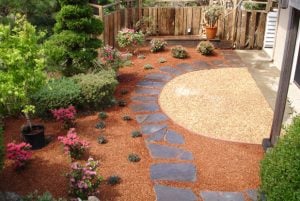Water Softener Discharge Into Yard

After a rain it slowly drains itself percolates into the surrounding soil.
Water softener discharge into yard. By code water softeners must be emptied into a laundry sink floor drain sump hole or properly trapped special outlet preserving an air gap of at. If the water softener is set up incorrectly the amount of brine can be much higher. Instead of draining all the water to the front yard however we decided to install a dry well which is merely a holding tank for a large water runoff. Use a separate drywell or floor drain to receive water softener backwash.
There is no floor drain and the waste line going to the septic tank is going through the wall at the ceiling of the basement well above the discharge line of the water softener. According to most plumbing codes a water softener drain line must not be connected directly to the household waste system. Under the basement floor is a bed of crushed gravel with french drains which lead out to the yard by the driveway. This is to prevent non potable water from flowing backwards possibly mixing and contaminating potable drinking water.
This causes two problems. Perforated drain tube photo 8 to the side of the dry well to help drain off and. We also connected a 4 in. Potassium chloride may be an acceptable alternative to normal salt or sodium chloride for problem areas.
I have a superior wall basement with a concrete slab floor. Water softeners are set to regenerate based on either flow measurements or by a timed. From multiple tank systems generated through the energy of moving water to a more conventional method various water softener discharge options cover all your alternatives. Contrary to what some people say water softener backwash poses a problem not only to septic tanks and drainfields but also to advanced treatment systems.
The good news is that there are water experts that will work with you to pick the water softener that is appropriate for you. Used properly softeners regenerate one to three times per week and produce between 40 and 150 gallons of brine per week. Make sure the discharge line is properly air gapped to prevent cross contamination.













































